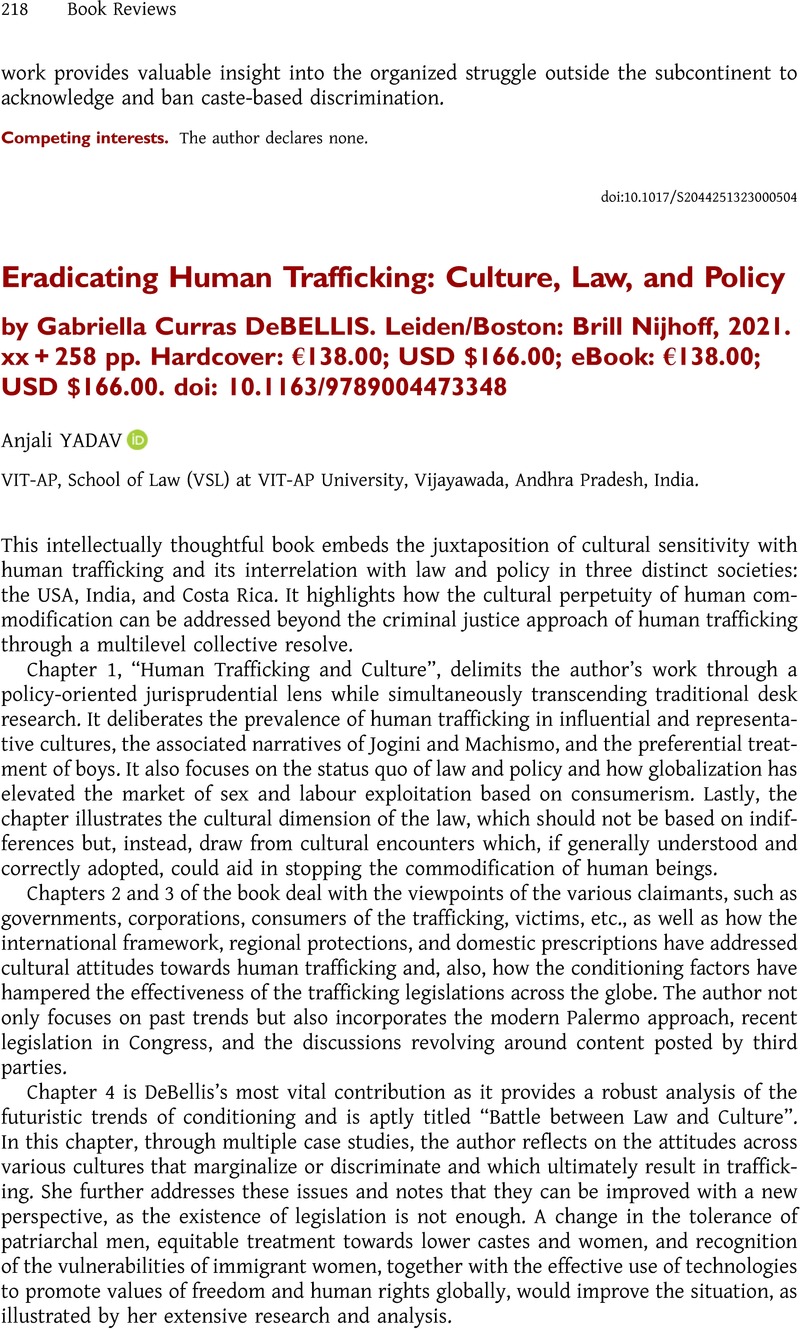No CrossRef data available.
Article contents
Eradicating Human Trafficking: Culture, Law, and Policy by Gabriella Curras DeBELLIS. Leiden/Boston: Brill Nijhoff, 2021. xx + 258 pp. Hardcover: €138.00; USD $166.00; eBook: €138.00; USD $166.00. doi: 10.1163/9789004473348
Review products
Eradicating Human Trafficking: Culture, Law, and Policy by Gabriella Curras DeBELLIS. Leiden/Boston: Brill Nijhoff, 2021. xx + 258 pp. Hardcover: €138.00; USD $166.00; eBook: €138.00; USD $166.00. doi: 10.1163/9789004473348
Published online by Cambridge University Press: 23 January 2024
Abstract
An abstract is not available for this content so a preview has been provided. Please use the Get access link above for information on how to access this content.

- Type
- Book Review
- Information
- Copyright
- Copyright © The Author(s), 2024. Published by Cambridge University Press on behalf of the Asian Society of International Law


